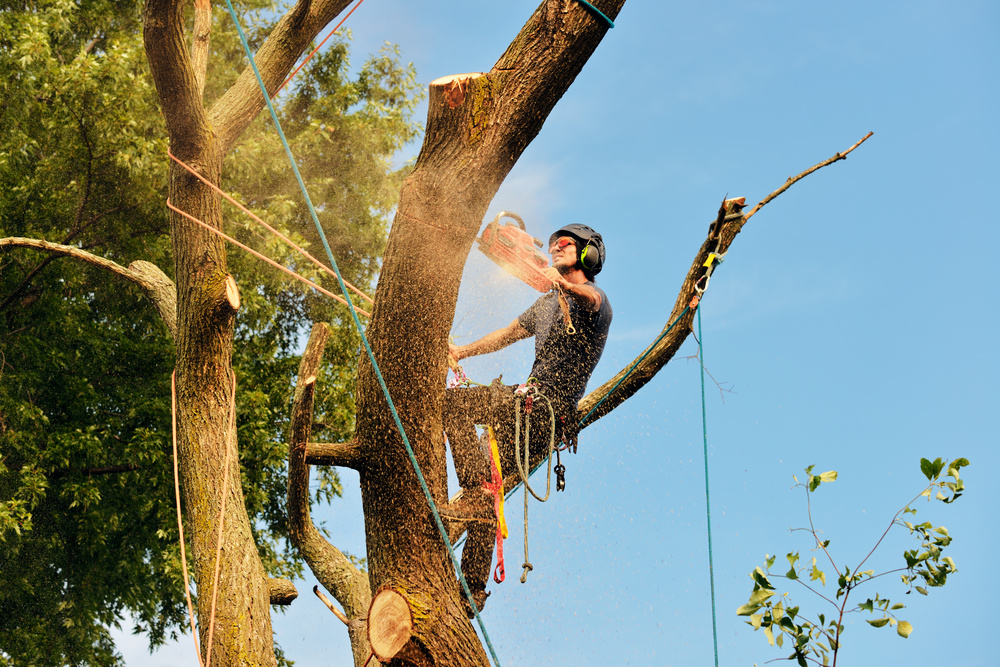Trees are an essential part of your yard. They complete the yard beauty by giving you lovely shade and thick branches for your kids’ swing sets. However, trees can only live for so long, and with time, you will need to remove the tree.
Over time, the tree loses its beauty and becomes a nuisance rather than a beautiful landscape feature. It can even pose a threat to the safety of the family when natural calamities strike your locality. So, consider removing it sometime. But when should you do the job?
The following are some key indicators that you need to remove from your yard:
It’s Bent
A leaning tree in your yard is a looming disaster that can cause damage when it falls. Trees may bend from stretching for sunlight or stress in their early growth. When you look at your tree from a certain angle and it’s bent, you need to remove it before it causes harm.
Given that it’s already bent towards a specific direction, you can’t do it yourself because it may fall on your roof or block the roads. For this, you need to enlist the help of trusted tree removal services near you.
Remember, there are many tree removal services you can employ, making it challenging for you to pick one. So, assess their offerings and costs well to hire the best one to get quality service and make your money worth it. Doing so helps ensure your yard is safe.
Root Problems
Your tree’s roots support your tree and help it get nutrients from the soil and water beneath the ground. But when it ages or something unfortunate happens that causes the tree’s root system to rot, you need to remove your tree since it’s no longer functioning correctly. Although root rot may be challenging to identify, you can look out for the following signs:
- Cankers
- Canopy thinning
- Fungus growth on the root area
- Discolored or wilted roots
- Decaying branches
- Poor tree growth
When you see this, your tree has become a safety hazard, and you should remove it. If you’re unsure, the right tree felling company can help you assess how severe the condition is and the next steps you should take.

Neighborly Dispute
No matter how friendly your neighbor is, yard trees at the border always bring disagreements. Trees can grow with invasive branches and roots. This invasiveness is worse if your plant is either the Chinese tallow, black locust, white poplar, or mimosa tree.
Although trimming may be your go-to solution, it becomes useless because, over time, they will grow again, making trimming your trees a repetitive task. So, in this instance, cutting down your tree is the most practical solution to avoid issues with your neighbors.
Storm Damage
Your yard tree may suffer a lot of damage after a storm. Heavy snow, lightning, and strong winds cause tree damage. Although your tree may not have fallen, the damage could cause problems and safety risks.
When rebuilding your home after a disaster, you need to cut down trees in the yard that were heavily damaged. It ensures your property is safe as you return to your home. You can identify a damaged tree with a broken trunk, significant splits, and soil erosion causing uprooting.
The Tree Is Dead
There’s no way to bring your dead tree back to life. Once an arborist confirms it’s dead or you can see the following sign, you need to get rid of it:
- It has dead branches
- The tree shows insect and disease symptoms
- The tree trunk has a different lean
- During growth seasons, it has no buds or leaves
- Browning needle tips or needle drop
A dead tree in your yard isn’t a pretty picture. You must chop it and get a new one to keep your yard beautiful and safe.
Stunting The Growth Of Other Plants
Trees aren’t the only plants in your yard. Their canopies can cause your lawn grass to struggle because it lacks sunshine. You must say goodbye to your tree to ensure your grass or other plants grow well. Also, this gives the animals that depend on the underbrush, such as ferns and saplings, a chance to survive.
Fungus And Rot
Fungus and rot on the stem of your tree are never a good sign—the two cause the stem to become hollow and weak, which can cause accidents in the yard. Therefore, once you see this, call an arborist to inspect the tree and guide you on what to do. Most of the time, you’ll need to cut the tree for your safety. Remember, you can always get another tree and care for it without risking human life.
Conclusion
The tree in your yard is dear to you for many reasons—you’ve made memories under it or with your children swinging. However, you may need to chop the tree for many reasons, as outlined herein. It’s all for your safety and that of your family. If you’re unsure about the tree, you can always enlist the help of your arborist for inspection and guidance on what you should do.